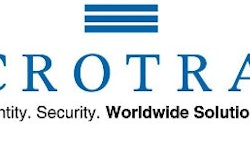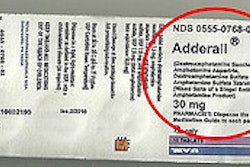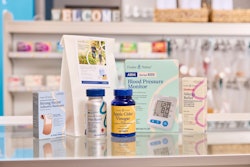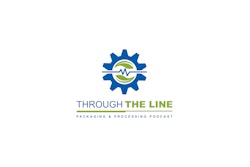
Public awareness of supply chain counterfeiting, diversion, and theft could lead to a situation where we are “one headline away” from Federal legislation that would be reactive in nature and probably not examine the problem from as many angles as present themselves when discussing serialization.
That's why the time to implement your global strategy is now.
That was the message Bill Fletcher delivered at Mettler Toledo's Pharma Exchange, an education-driven free event for end users attended by 80-plus suppliers in Chicago July 10 and 11. Fletcher is a managing partner at Pharma-Logic Solutions.
Serialization includes at least three components, and we often hear people interchanging them. These include: e-Pedigree (where it came from), track and trace (where it has been and where it is headed now), and authentication (where the end user closes the loop.)
“Bake in” agility to your serialization strategy, said Fletcher. “Variations in product ID (from mergers and acquisitions, say) and country-specific uniqueness” calls for a very modular system that can take into account regional regulatory requirements, all factored into a flexible data system.
A serialization strategy does not have to be complex, Fletcher said, noting many other retail product supply chains have been successfully implementing solid programs for brand protection, recalls, etc. And they have achieved these results employing basic standards, some of which have been around for decades. These include GS-1, the use of electronic documents for shipping, etc.
Pharmaceutical companies are being exposed to multiple suppliers with different strategies for tackling serialization. Some paralysis of analysis has set in. Pilot programs, now years old from back in 2004 or 2007, may be on the shelf.
A discussion about more possible delays in California e-Pedigree law drew chuckles from the crowd.
Don't try to fit any supplier solution to your problem, develop a requirements document that spells out what you need to accomplish, with every product, in every country. Any supplier should then be able to answer “yes” or “no,” meaning their system does or does not meet this specific requirement. A review of suppliers based on their ability to meet your requirements, not on their sales pitch, will reveal the best supplier.
Fletcher mentioned this same requirements doc helps you write your validation documents later because you know what you are delivering and what needs to be monitored, measured, and validated.
Plan for California, for instance, and the use of GTIN (global trade identification number) but know that the U.K. and Turkey use the GTIN format from GS1 while China uses a country-specific national trade item number (NTIN) that is not supported in national trade.
Your traceability requirements should be layered with regional regulations on top of electronic product code information, on top of an events repository.
If you start at the packaging level, the data portion of the project gets bogged down. Establish package-encoding requirements independent of hardware or software.
With this layered approach, any site should be able to own serial number allocation and recording, regardless of enterprise system.
While the site level controls serial numbers and aggregation, layer the data management up to enterprise level.
“Establish a global traceability regulatory work flow and leverage local resources,” said Fletcher. Using GS-1 and other standards should prepare you for most challenges. Flexibility in data management to accommodate any exceptions is the key to riding the changing regulatory landscape.
Fletcher did acknowledge that serialization would create complex database issues that include public access for authentication and security challenges. But he stressed that many suppliers like GM, Fed-EX, etc., are already successfully employing these strategies outside of pharmaceuticals.
“I think we've overcomplicated this a bit,” he said. And he also stressed there are other benefits beyond complying with California regulations. There is excellent business intelligence in following raw ingredients, batch processing, and packaging that can improve your bottom line.
That's why the time to implement your global strategy is now.
That was the message Bill Fletcher delivered at Mettler Toledo's Pharma Exchange, an education-driven free event for end users attended by 80-plus suppliers in Chicago July 10 and 11. Fletcher is a managing partner at Pharma-Logic Solutions.
Serialization includes at least three components, and we often hear people interchanging them. These include: e-Pedigree (where it came from), track and trace (where it has been and where it is headed now), and authentication (where the end user closes the loop.)
“Bake in” agility to your serialization strategy, said Fletcher. “Variations in product ID (from mergers and acquisitions, say) and country-specific uniqueness” calls for a very modular system that can take into account regional regulatory requirements, all factored into a flexible data system.
A serialization strategy does not have to be complex, Fletcher said, noting many other retail product supply chains have been successfully implementing solid programs for brand protection, recalls, etc. And they have achieved these results employing basic standards, some of which have been around for decades. These include GS-1, the use of electronic documents for shipping, etc.
Pharmaceutical companies are being exposed to multiple suppliers with different strategies for tackling serialization. Some paralysis of analysis has set in. Pilot programs, now years old from back in 2004 or 2007, may be on the shelf.
A discussion about more possible delays in California e-Pedigree law drew chuckles from the crowd.
Don't try to fit any supplier solution to your problem, develop a requirements document that spells out what you need to accomplish, with every product, in every country. Any supplier should then be able to answer “yes” or “no,” meaning their system does or does not meet this specific requirement. A review of suppliers based on their ability to meet your requirements, not on their sales pitch, will reveal the best supplier.
Fletcher mentioned this same requirements doc helps you write your validation documents later because you know what you are delivering and what needs to be monitored, measured, and validated.
Plan for California, for instance, and the use of GTIN (global trade identification number) but know that the U.K. and Turkey use the GTIN format from GS1 while China uses a country-specific national trade item number (NTIN) that is not supported in national trade.
Your traceability requirements should be layered with regional regulations on top of electronic product code information, on top of an events repository.
If you start at the packaging level, the data portion of the project gets bogged down. Establish package-encoding requirements independent of hardware or software.
With this layered approach, any site should be able to own serial number allocation and recording, regardless of enterprise system.
While the site level controls serial numbers and aggregation, layer the data management up to enterprise level.
“Establish a global traceability regulatory work flow and leverage local resources,” said Fletcher. Using GS-1 and other standards should prepare you for most challenges. Flexibility in data management to accommodate any exceptions is the key to riding the changing regulatory landscape.
Fletcher did acknowledge that serialization would create complex database issues that include public access for authentication and security challenges. But he stressed that many suppliers like GM, Fed-EX, etc., are already successfully employing these strategies outside of pharmaceuticals.
“I think we've overcomplicated this a bit,” he said. And he also stressed there are other benefits beyond complying with California regulations. There is excellent business intelligence in following raw ingredients, batch processing, and packaging that can improve your bottom line.






















